Film Name:西遊記女兒國 / The Monkey King 3: Kingdom of Women
I caught this movie early during its Valentine’s Day sneak preview and truly felt the special significance of this approach.
Zheng Baozhi’s Spring Festival blockbuster “Journey to the West” series has now reached its third installment. The good news is that each effort shows improvement—compared to the first two films, “The Monkey King: Hero Is Back” and “The Monkey King 2: The White-Bone Demon,” “The Monkey King 3: The Daughter of the Monkey King” has more commendable aspects. The bad news is that the series’ old flaws remain uncorrected, with glaring weaknesses and points of criticism abound. Judged by ordinary standards, it likely still struggles to pass the bar.
[Warning: The following contains major spoilers.]
Zheng Baorui stays true to his signature style: I’m here to deliver spectacle and fantasy blockbusters.
This marks the first time the story of the Kingdom of Women has been brought to the big screen. Compared to television adaptations, film offers greater freedom to tell a standalone, unrestrained tale. A strictly faithful screenplay based on the original text was clearly impossible, so “how it would be adapted” naturally became the question on everyone’s mind.
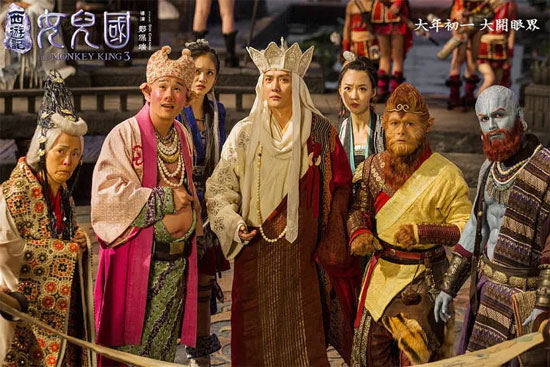
In this regard, I believe the film’s conceptual framework is quite solid. It retains core elements like the Mother-Child River, the Abortive Spring, and the monk-laywoman romance, while introducing fresh ideas such as the barrier, the Sea of Suffering, and the human-divine love story. This approach breathes new life into the old tale.
Additionally, the film’s use of comedic moments feels more polished than before—though awkward laughs and forced humor still dominate.
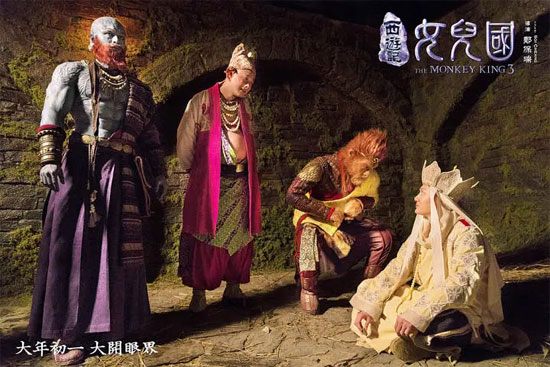
Scenes like the back-and-forth between prison cells and separate interrogations play on gags and jokes that are quite close to contemporary entertainment standards. Of course, they still fall short of feeling entirely natural and seamless.
However, the greatest merit of “Kingdom of Women” lies in Zheng Baozhi’s commitment to innovation, change, and progress: previous entries in the series were grand yet hollow, full yet superficial. This film, however, breaks from that mold, focusing on “small yet solid” character development. Crucially, the core narrative centers on the love story between Tang Sanzang and the Queen of Women, with the central theme distilled into a single word: “love.”
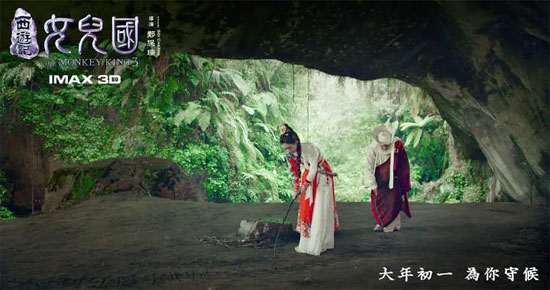
By lowering the creative bar and narrowing the focus, the likelihood of “grandiosity and hollowness” or “scattered and disjointed” storytelling naturally diminishes.
The duet “Daughter’s Affection” by Li Ronghao and Zhang Liangying is another plus point. Revisiting the lyrics alone is enough to stir emotions:
How can one find a way to satisfy both?
Not betray the Buddha, nor forsake you.
Reflecting, worldly desires harm monastic vows—
Such has always been the case, no need for cleverness.
Born into suffering, I journey westward;
Born into beauty, you captivate the city.
How can I erase your image,
As if forgetting my own name?
What of royal power and wealth?
What fear of precepts and rules?
My heart yearns for you, a thousand twists and turns—
Hurry, take me far away, soaring high.
What’s the point of good and evil, compassion and waiting until my eyes grow dim?
Let me wither to ashes in the next life, just to walk beside you in this one.
…Such blatant sentimentality stems from confidence—and let’s face it, some people just buy into it.
Pushing the narrative this far is pushing it to the limit, especially since “Kingdom of Women” is a film with more flaws than merits.
The most glaring issue is the imbalance between dramatic and action sequences—while cutting unnecessary fight scenes is generally a good move, “Kingdom of Women” seems to have swung to the opposite extreme. It pours all its energy into emotional development, sacrificing scenes that provide levity and atmosphere (since the interactions between Tang Sanzang and the Queen aren’t particularly engaging). Over time, this easily leads to audience fatigue—what’s commonly called a “dull moment.”
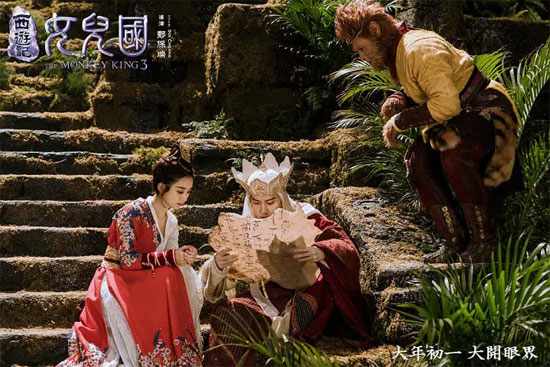
In my memory, aside from the opening and closing scenes, along with a few sequences like the prison, execution, and treasure hunt, the content that truly stirs the desire to watch is rather lackluster. Of course, this could be attributed to “personal preference.” After all, many boys who watched the Journey to the West TV series as children preferred the adventure and monster-slaying elements like the Kingdom of Chichi or the State of Yuhua, finding the romantic subplots in the Kingdom of Women less appealing and harder to grasp.
Alright, if the filmmakers decided to tell a love story, they should have done it well. But the film suffers from numerous issues, some of them logical.
Take the “low-budget version of The Shape of Water” romance between the Imperial Sage and the River God of Wangchuan—it’s arguably the film’s “source of conflict.” While the idea of a mortal and a minor deity falling in love across a barrier felt poetic, the reason for their breakup instantly pulled me out of the story…
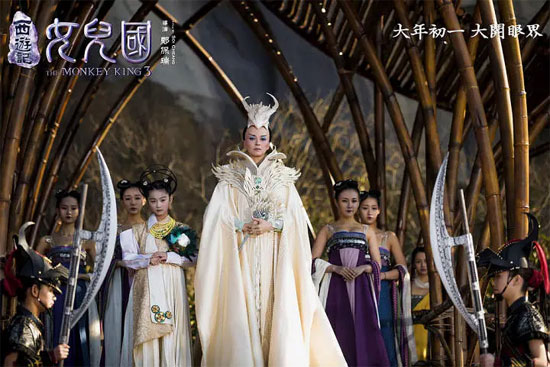
The Grand Sage broke up with the River Goddess simply because the previous Queen of the Kingdom of Women entrusted her child to him… This feels like a close friend entrusting her daughter to you—you’ll become both stepmother and teacher, which is demanding, but hardly grounds to forbid dating. Remember, the relationship between the Imperial Advisor and the River God was purely platonic. Such spiritual connection and fulfillment shouldn’t be severed by sudden responsibilities—in other words, this plot twist feels forced.
Sister Ziling’s portrayal of the River Goddess of Wangchuan is stunningly beautiful (the technical effects are truly breathtaking), yet she lives a life of bitter longing. Her transformation from love to hatred is understandable, but the final outcome leaves one frowning: while harming others is wrong, the Buddha’s punishment seems tinged with worldly sentiment—doesn’t this amount to hastily concluding the film’s ultimate question?
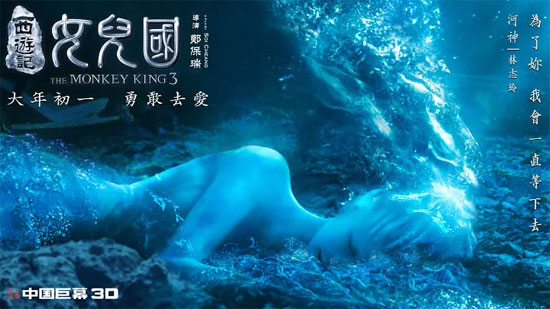
In truth, the Imperial Advisor’s insistence on parting could easily be justified—through national duties, caring for the mischievous young king, or upholding the kingdom’s code. A few more scenes would have sufficed (instead of leaving it to the audience’s imagination), making it far more plausible. Yet none of this exists in the film. You’d think the entire Kingdom of Women has nothing to do but idle away their days—where are all these pressing state affairs?
Yes, “Kingdom of Women” is precisely such a film lacking in detail. It possesses only a rough main plotline and the most basic conflict, with the rest entirely filled by lengthy romantic scenes—more akin to a “stream-of-consciousness” film.
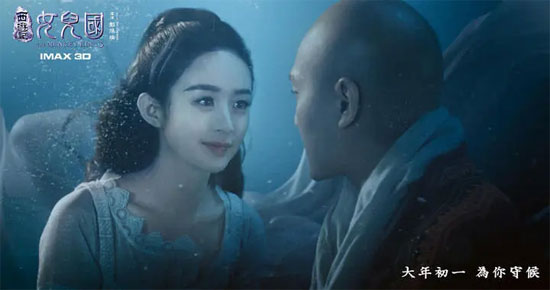
It’s not impossible to tell a thoughtful story about “love” and “Buddhist philosophy,” but when presented through film, it must transcend ordinary romantic tropes to truly captivate audiences.
Clearly, “The Kingdom of Women” falls short here. If Feng Shaofeng’s performance was merely adequate, then Zhao Liying’s still needs refinement… Beyond the acting, the plot feels formulaic and somewhat contrived.
Moreover, Tang Sanzang’s final epiphany largely echoes the sentiment from Journey to the West: Conquering the Demons—”Love between men and women is encompassed within the greater love; all love among sentient beings is love, without distinction of magnitude.” Yet it lacks the latter’s impactful resonance: “Only through suffering can one truly understand the pain of all beings; only through attachment can one let go of attachment; only through attachment can one achieve complete detachment.”
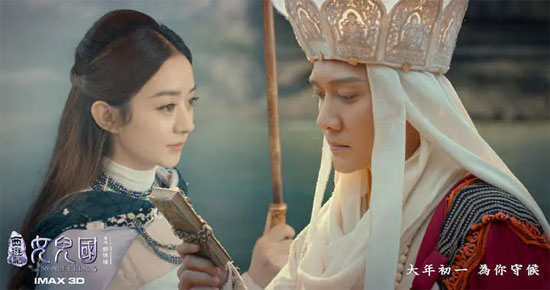
Overall, “The Monkey King 3: Kingdom of Women” has its moments but remains a film you could take or leave… Still, I’ll likely watch the next installment in the series. Looking on the bright side, it keeps improving—perhaps the next one will deliver more surprises.
Please specify:Anime Phone Cases » The Monkey King 3: Kingdom of Women 西遊記女兒國 2018 Film Review: There has been progress, but there is still significant room for improvement.